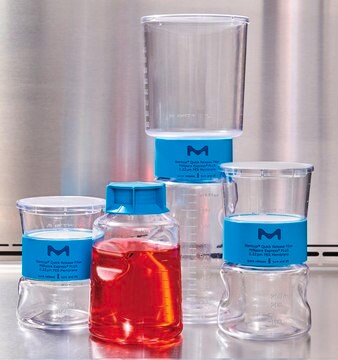SAB4700051
Monoclonal Anti-CD3-PE antibody produced in mouse
clone APA1/1, purified immunoglobulin, buffered aqueous solution
Synonym(s):
Anti-CD3 (activation epitope)
Sign Into View Organizational & Contract Pricing
All Photos(1)
About This Item
UNSPSC Code:
12352203
NACRES:
NA.44
Recommended Products
biological source
mouse
Quality Level
conjugate
phycoerythrin (R-PE) conjugate
antibody form
purified immunoglobulin
antibody product type
primary antibodies
clone
APA1/1, monoclonal
form
buffered aqueous solution
species reactivity
human, mouse
concentration
0.1 mg/mL
technique(s)
flow cytometry: suitable
isotype
IgG1
NCBI accession no.
shipped in
wet ice
storage temp.
2-8°C
target post-translational modification
unmodified
Gene Information
human ... CD3(916)
General description
The mouse monoclonal antibody APA1/1 recognizes an activation-dependent intracellular epitope of CD3 epsilon. Exposure of the epitope precedes CD3 phosphorylation and recruitment and activation of ZAP70, which initiates the signaling cascade produced by T-cell activation. APA1/1 provides the earliest known marker for TCR-mediated T cell activation.
Immunogen
Purified human CD3 proteins isolated from thymus
Application
The reagent is designed for Flow Cytometry analysis. Suggested working dilution is 5 μg/mL of sample. Indicated dilution is recommended starting point for use of this product. Working concentrations should be determined by the investigator.
Features and Benefits
Evaluate our antibodies with complete peace of mind. If the antibody does not perform in your application, we will issue a full credit or replacement antibody. Learn more.
Physical form
Solution in phosphate buffered saline containing 15 mM sodium azide and 0.2% high-grade protease free BSA as a stabilizing agent.
Disclaimer
Unless otherwise stated in our catalog or other company documentation accompanying the product(s), our products are intended for research use only and are not to be used for any other purpose, which includes but is not limited to, unauthorized commercial uses, in vitro diagnostic uses, ex vivo or in vivo therapeutic uses or any type of consumption or application to humans or animals.
Not finding the right product?
Try our Product Selector Tool.
Storage Class Code
10 - Combustible liquids
WGK
WGK 2
Flash Point(F)
Not applicable
Flash Point(C)
Not applicable
Choose from one of the most recent versions:
Already Own This Product?
Find documentation for the products that you have recently purchased in the Document Library.
Priya Ramanathan et al.
Asian Pacific journal of cancer prevention : APJCP, 15(14), 5909-5916 (2014-08-02)
Human papillomavirus infection (HPV) and HPV related immune perturbation play important roles in the development of cervical cancer. Since mature dendritic cells (DCs) are potent antigen-presenting cells (APC), they could be primed by HPV antigens against cervical cancers. In this
Amy P Wong et al.
American journal of physiology. Lung cellular and molecular physiology, 293(3), L740-L752 (2007-07-10)
It has been suggested that some adult bone marrow cells (BMC) can localize to the lung and develop tissue-specific characteristics including those of pulmonary epithelial cells. Here, we show that the combination of mild airway injury (naphthalene-induced) as a conditioning
Adam J Pritchard et al.
PloS one, 9(6), e99444-e99444 (2014-06-10)
The family of sphingosine-1-phosphate receptors (S1PRs) is G-protein-coupled, comprised of subtypes S1PR1-S1PR5 and activated by the endogenous ligand S1P. The phosphorylated version of Fingolimod (pFTY720), an oral therapy for multiple sclerosis (MS), induces S1PR1 internalisation in T cells, subsequent insensitivity
Ailin Lepletier et al.
PLoS neglected tropical diseases, 8(10), e3203-e3203 (2014-10-21)
The protozoan parasite Trypanosoma cruzi is able to target the thymus and induce alterations of the thymic microenvironmental and lymphoid compartments. Acute infection results in severe atrophy of the organ and early release of immature thymocytes into the periphery. To
Kyriaki Ioannou et al.
International journal of oncology, 45(4), 1457-1468 (2014-07-23)
Macrophage migration inhibitory factor (MIF) is a pleiotropic pro-inflammatory cytokine, which possesses a contributing role in cancer progression and metastasis and, thus, is now considered a promising anticancer drug target. Many MIF-inactivating strategies have proven successful in delaying cancer growth.
Our team of scientists has experience in all areas of research including Life Science, Material Science, Chemical Synthesis, Chromatography, Analytical and many others.
Contact Technical Service






